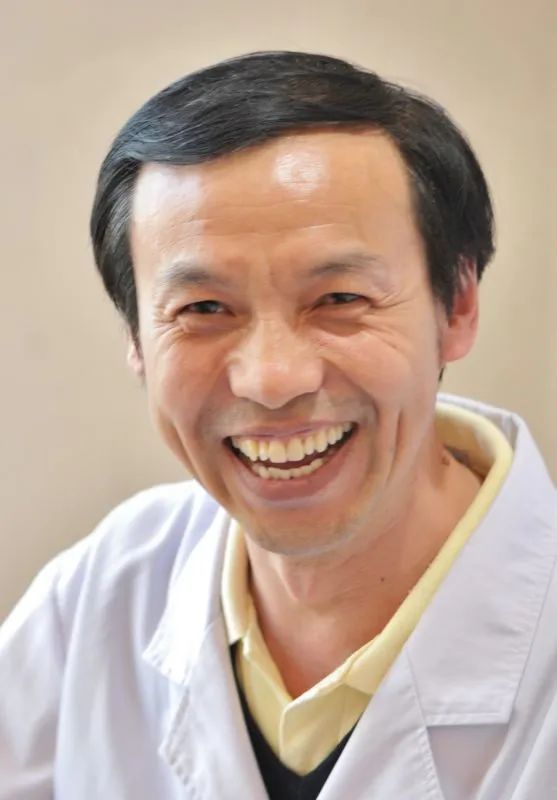Common cold is characterized by symptoms such as sneezing, nasal congestion, runny nose, aversion to wind or cold, fever, headache, and general body aches or discomfort.
Although the common cold is a minor issue, it is essential to distinguish between cold and heat, and to treat it accordingly for timely recovery. If one fails to differentiate between cold and heat and indiscriminately uses anti-inflammatory and antipyretic treatments, it can easily lead to prolonged illness or the invasion of pathogenic factors, resulting in pneumonia, bronchitis, or even more severe conditions.
01Invasion of Cold Pathogen (aversion to cold, distinguishing whether there is sweating)
The common cold caused by the invasion of cold pathogens primarily presents with symptoms of aversion to cold, fever, tightness or pain throughout the body, nasal congestion, sneezing, and runny clear nasal discharge. At this time, the first step is to determine whether there is sweating. By touching the skin, if it is dry or hot, it indicates no sweating; if it is moist, it indicates sweating.
Both conditions arise from the invasion of cold pathogens, which bind the defensive qi, preventing it from warming and nourishing the flesh, leading to aversion to cold; when cold pathogens invade, the defensive qi rises to resist the pathogen, resulting in a struggle between the righteous and the evil, hence the fever;both conditions exhibit symptoms of aversion to cold and fever. The distinction between sweating and no sweating relates to the severity of the cold invasion and the strength of the constitution. Those with a more severe cold invasion are prone to develop a Taiyang cold damage syndrome (aversion to cold with no sweating); those with a lighter cold invasion, particularly those with a weak spleen and stomach constitution, are more likely to develop a Taiyang wind strike syndrome (aversion to cold with sweating).

Invasion of Cold Pathogen (aversion to cold with no sweating)
Clinical manifestations: aversion to cold, fever, no sweating, headache, body pain or stiffness in limbs, nasal congestion with clear nasal discharge, pale tongue with thin white coating and moistness, floating and tight pulse, etc.
Cold pathogens bind the exterior, causing the pores to close, hence no sweating; cold pathogens bind the exterior, obstructing the meridians, leading to headache or stiffness in limbs; the lungs are associated with the skin and hair, and when cold pathogens bind the exterior, lung qi is obstructed, resulting in nasal congestion and clear nasal discharge;
Treatment method: warm and acrid to induce sweating and disperse cold.
Formulas: For mild cases, use Scallion and Fermented Soybean Decoction (scallion white, fermented soybean) with Jing Jie (Schizonepeta), Fang Feng (Siler), Su Ye (Perilla Leaf), and Xing Ren (Apricot Kernel); for severe cases, use Ma Huang Decoction (Ma Huang, Gui Zhi, Xing Ren, Gan Cao).
Dietary therapy: You can use 50 grams of fresh ginger, boil in 300 milliliters of water, and drink while hot. Alternatively, use scallion and coriander, boil in 300 milliliters of water, add a bit of pepper, and drink while hot. Then cover yourself with a blanket and sleep for 2 hours, sweating profusely, which may resolve the cold.
Over-the-counter medications can include: wind-cold cold granules, cold soft capsules, which release the exterior and disperse lung cold, allowing the external pathogen to be resolved through sweating.

Invasion of Cold Pathogen (aversion to cold with sweating)
Clinical manifestations: aversion to cold, fever, sweating, headache, nasal congestion with dry retching, pale tongue with thin white coating, floating and slow pulse, etc., indicating a weak spleen and stomach constitution, with loose pores, and a lighter cold invasion.
With a weak spleen and stomach constitution, loose pores, the defensive qi cannot secure the exterior, and the nutritive qi cannot guard the interior, leading to sweating; cold pathogens bind the exterior, obstructing the qi, resulting in headache; cold pathogens bind the exterior, obstructing lung qi, leading to nasal congestion.
Treatment method: resolve the muscle layer, disperse cold, and harmonize the nutritive and defensive qi.
Formulas: Gui Zhi Decoction (Gui Zhi, Bai Shao, Sheng Jiang, Zhi Gan Cao, Da Zao).
Dietary therapy: Cook a small bowl of thin rice porridge, drink while hot, and cover yourself with a blanket for 2 hours to induce sweating to recover.
If symptoms include aversion to cold, fever, no sweating, stiff neck, heavy and painful head, body aches, it is caused by external wind-cold-dampness. In treatment, one may prefer the over-the-counter medication Jiu Wei Qiang Huo Wan to induce sweating and dispel dampness, while also clearing internal heat; if there is fever, headache, heaviness or pain in the limbs, along with abdominal distension, abdominal pain, vomiting, diarrhea, and fatigue, it is caused by external wind-cold and internal injury from damp stagnation. For this type of cold, the preferred over-the-counter medication is Huo Xiang Zheng Qi Soft Capsules to release the exterior, transform dampness, and regulate qi.
02Invasion of Heat Pathogen (aversion to heat, red and swollen throat)
Manifestations: fever, sweating, no aversion to cold or aversion to heat, thirst, headache, red and swollen throat, cough, red tongue with tip and edges, thin white or thin yellow coating, rapid pulse.
Heat pathogens in the lungs manifest as fever, even aversion to heat; heat pathogens do not have the property of binding or stagnating, hence no aversion to cold; internal heat forces fluids outward, resulting in sweating; heat pathogens invade the clear orifices, leading to headache; the throat is the gateway of the lungs, and when lung heat disturbs the throat, it can cause redness and swelling.
Treatment method: clear and resolve lung heat.
Formulas: For mild fever, mild throat pain, and predominant cough, use Mulberry and Chrysanthemum Drink; for higher fever, predominant throat pain, and less cough, use Yin Qiao San. Available over-the-counter medications include Mulberry and Chrysanthemum Cold Tablets or Yin Qiao Detox Tablets.
03Invasion of Dryness Pathogen (dry cough without phlegm, thirst, dry throat)
Clinical manifestations: dry cough without phlegm, or scanty and sticky phlegm, thirst, dry throat, dry nose, red tongue, thin white coating and dry, rapid and large right pulse.
In the early stage of external dryness invasion, the disease is located in the lungs, easily damaging lung fluids. Damage to lung fluids affects the lung’s ability to disperse and descend, leading to cough; when lung fluids are damaged, it results in dry cough without phlegm, or scanty and sticky phlegm, thirst, dry throat, and dry nose. Damage to fluids leads to yin deficiency, which can generate lung heat, hence the signs of red tongue, thin white coating and dry, rapid and large right pulse indicating lung heat.
Treatment method: clear and disperse lung heat, nourish yin and moisten dryness.
Formulas: Mulberry and Chrysanthemum Drink (Mulberry Leaves, Chrysanthemum, Platycodon, Forsythia, Apricot Kernel, Mint, Licorice, Reed Root) with Sha Shen (Glehnia) and Li Pi (Pear Skin); or use Sang Xing Decoction (Mulberry Leaves, Xiang Bei, Fermented Soybean, Zhi Mu, Pear Skin, Apricot Kernel, Sha Shen).
This article is compiled from Xiao Xiangru’s “Reconstruction of the Diagnosis and Treatment System for Exogenous Diseases”
 Xiao Xiangru, Professor, Chief Physician, Doctoral Supervisor. Winner of the “Monthly Li Traditional Chinese Medicine Award” for six consecutive terms. Born into a family of traditional Chinese medicine, he is passionate about the classics and adheres to clinical practice, having studied under many renowned masters. He is the first doctoral student in nephrology at the China Academy of Chinese Medical Sciences and the first doctoral student of Professor Shi Zhensheng, the founder of nephrology in China, a national academic leader in nephrology, a standing committee member of the Nephrology Branch of the Chinese Association of Traditional Chinese Medicine, and has been awarded the title of “Bethune-style Good Doctor”.Professor Xiao specializes in treating various kidney diseases, kidney deficiency, and difficult diseases, proposing the “Holistic Functional Compensation Therapy,” which can significantly delay disease progression, reduce or eliminate the need for dialysis, and has treated over ten thousand cases of chronic kidney failure.
Xiao Xiangru, Professor, Chief Physician, Doctoral Supervisor. Winner of the “Monthly Li Traditional Chinese Medicine Award” for six consecutive terms. Born into a family of traditional Chinese medicine, he is passionate about the classics and adheres to clinical practice, having studied under many renowned masters. He is the first doctoral student in nephrology at the China Academy of Chinese Medical Sciences and the first doctoral student of Professor Shi Zhensheng, the founder of nephrology in China, a national academic leader in nephrology, a standing committee member of the Nephrology Branch of the Chinese Association of Traditional Chinese Medicine, and has been awarded the title of “Bethune-style Good Doctor”.Professor Xiao specializes in treating various kidney diseases, kidney deficiency, and difficult diseases, proposing the “Holistic Functional Compensation Therapy,” which can significantly delay disease progression, reduce or eliminate the need for dialysis, and has treated over ten thousand cases of chronic kidney failure.

